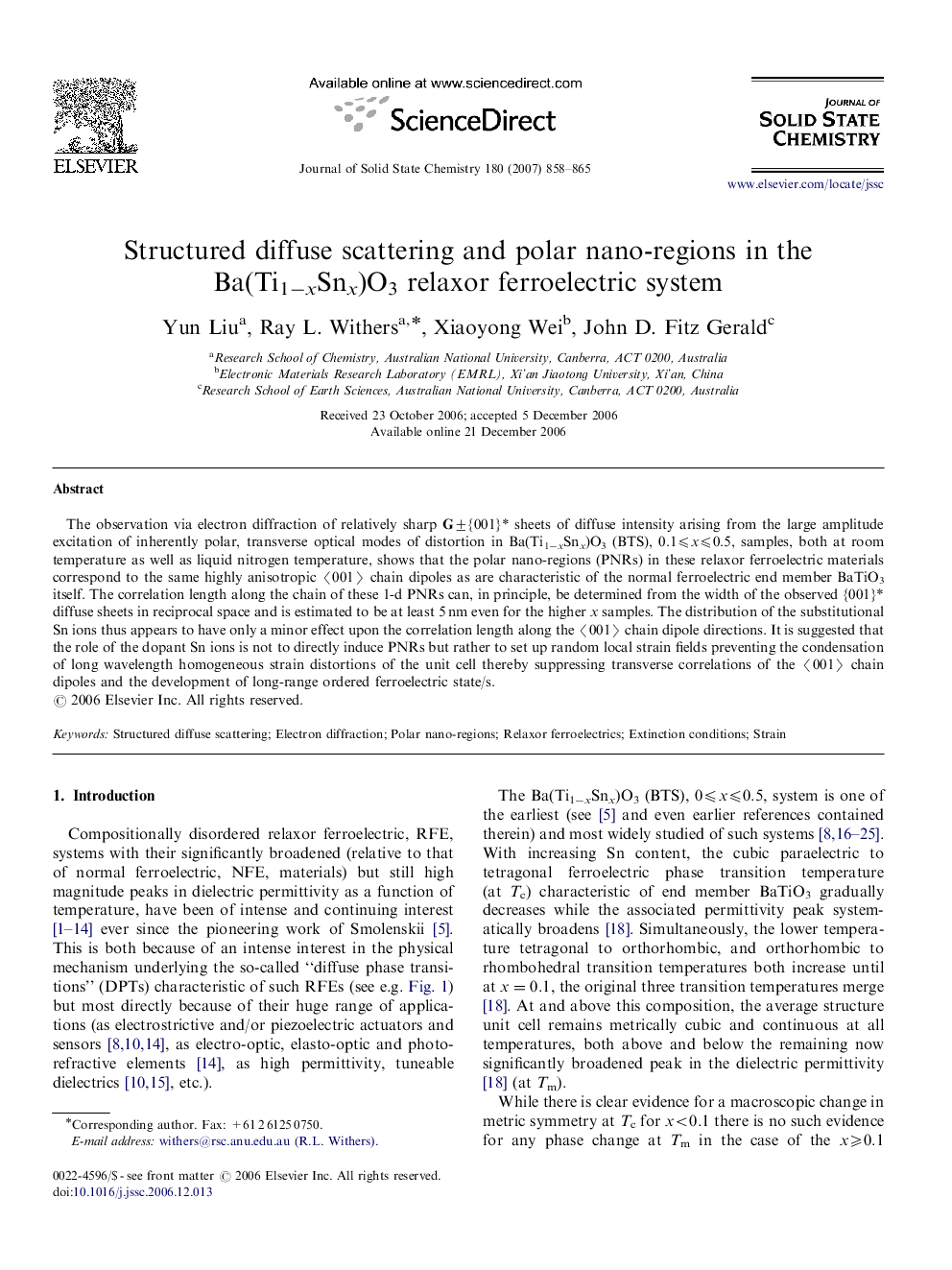| Article ID | Journal | Published Year | Pages | File Type |
|---|---|---|---|---|
| 1333853 | Journal of Solid State Chemistry | 2007 | 8 Pages |
The observation via electron diffraction of relatively sharp G±{001}* sheets of diffuse intensity arising from the large amplitude excitation of inherently polar, transverse optical modes of distortion in Ba(Ti1−xSnx)O3 (BTS), 0.1⩽x⩽0.5, samples, both at room temperature as well as liquid nitrogen temperature, shows that the polar nano-regions (PNRs) in these relaxor ferroelectric materials correspond to the same highly anisotropic 〈001〉 chain dipoles as are characteristic of the normal ferroelectric end member BaTiO3 itself. The correlation length along the chain of these 1-d PNRs can, in principle, be determined from the width of the observed {001}* diffuse sheets in reciprocal space and is estimated to be at least 5 nm even for the higher x samples. The distribution of the substitutional Sn ions thus appears to have only a minor effect upon the correlation length along the 〈001〉 chain dipole directions. It is suggested that the role of the dopant Sn ions is not to directly induce PNRs but rather to set up random local strain fields preventing the condensation of long wavelength homogeneous strain distortions of the unit cell thereby suppressing transverse correlations of the 〈001〉 chain dipoles and the development of long-range ordered ferroelectric state/s.
Graphical abstractThe characteristic G±{001}* sheets of diffuse intensity characteristic of the relaxor ferroelectric Ba(Ti1−xSnx)O3 (BTS), 0.1⩽x⩽0.5, system along with the inherently polar, transverse optical modes of distortion responsible.Figure optionsDownload full-size imageDownload as PowerPoint slide
